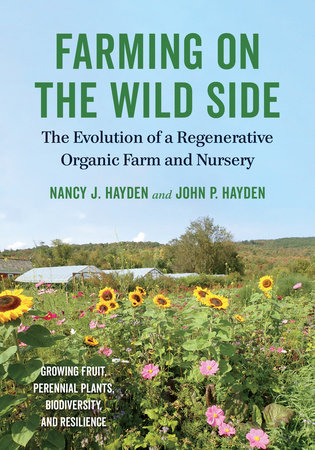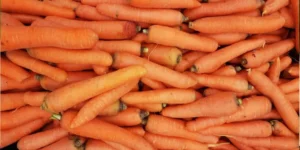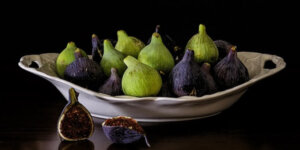How to Manage Invasive Thistle and Improve Your Soil

Invasive plants creeping into your yard is frustrating. Particularly for thistle, there’s a better approach than yanking it out at the root or worse spraying herbicide. Work smarter, not harder, with these approaches to removing invasive thistle.
The following are excerpts from Beyond the War on Invasive Species by Tao Orion and The Wild Wisdom of Weeds by Katrina Blair. They have been adapted for the web.
Managinng Thistle
To Tao Orion, author of Beyond the War on Invasive Species, and Katrina Blair, author of The Wild Wisdom of Weeds, plants like thistle are helping the existing ecosystems thrive.
Take a look at Orion and Blair’s alternative approaches to managing and using these kinds of plants to your advantage.
Bull Thistle
Classification: Cirsium vulgare
Geographic Location: Pacific and western states
Description: It is a tall biennial thistle, forming a rosette of leaves and a taproot up to 70 cm long in the first year, and a flowering stem 1–1.5 m tall in the second year.
The stem is winged, with numerous longitudinal spine-tipped wings along its full length. The leaves are stoutly spined, grey-green, and deeply lobed. The inflorescence is pink-purple, with all the florets of similar form. As in other species of Cirsium, the pappus hairs are feathery with fine side hairs.
Bull Thistle’s Role in Healthy Soil Building
by Tao Orion of Beyond the War on Invasive Species.
Bull thistle is a biennial thistle native to Europe. It grows throughout North America, and is considered an invasive species in pastures and forestland. However, bull thistle mostly grows where soil has been disturbed, either along roadsides, or in overgrazed pastures.
This makes sense, because bull thistle has a dense, spike-like taproot that can penetrate even the most compacted soils. Once the plant dies after going to seed, the fleshy root decomposes, adding organic matter, minerals, and leaving behind a sizable channel for air and water to travel deeper down in the soil profile.
Breathing Life Into Soil
This decomposing root literally breathes life into the soil, as beneficial soil organisms require water and oxygen to thrive. Slowly but surely, the ground in which bull thistles grow will improve as organic matter content and water-holding capacity increases.
 Plants like thistles are pioneer species, and their characteristics are making room for the next succession of plants and animals.
Plants like thistles are pioneer species, and their characteristics are making room for the next succession of plants and animals.
Like many plants in the thistle clade of the botanical family Asteraceae, bull thistles provide ample pollen and nectar resources for butterflies, honeybees, hummingbirds, and beneficial insects like green lacewings. Birds like goldfinches and juncos love their seeds, as do white-tailed deer and rabbits.
So if you come upon a patch of bull thistle, you can be sure that there is probably a whole ecosystem associated with it, and management of this species should proceed with care.
Like any invasive species, managers should look at the functions the organism is serving in the ecosystem, and if management is deemed appropriate, then the strategy should seek to mimic the ecological niches and functions that the organism is filling.
Bull Thistle: Keep Or Remove?
In the case of bull thistle, I tend to leave most of the plants that I see on my property, because I appreciate their habitat value.
They also indicate areas that are compacted or less fertile – the results of previous poor farming practices on the overgrazed pastureland that comprises most of my farm – so are indicative of areas that I need to spend more time working with.
Sometimes though, when they are growing where I don’t want them, I chop them back with a sharp hoe, leaving their taproots to decompose and retaining the soil building benefits with minimal soil disturbance.
If they are chopped in their second year of growth, the vegetation can be used to build compost, which can be used to build up soil fertility.
Planting Radishes
Plants with similar root structure like daikon radish can also be planted to mimic the ecological function of bull thistles. Territorial Seed Company sells a variety of daikon called ‘Groundhog’ that can be planted as a cover crop or as part of a pasture mix.
Radishes are more palatable for livestock than thistles, and serve many of the same ecological functions – decompacting soil, pollinator forage, habitat, and food for birds.
Considering the plant’s beneficial ecological characteristics, making use of and mimicking them with other species in the pursuit of ultimately building soil fertility will ensure that over time, your thistle ‘problem’ will be but a faint memory as your land and gardens transition to a more fertile and abundant state.
 Canadian Thistle
Canadian Thistle
Classification: Cirsium arvense
Geographic Location: Northeastern, mid-Atlantic, Great Lakes, and northern Great Plains states
Description: It is a herbaceous perennial plant that grows 30–100 cm and forms extensive clonal colonies from rhizomes that send up numerous erect stems each spring.
Stems are green and smooth, mostly without spiny wings. The leaves are very spiny and lobed. The inflorescence is pink-purple and the seeds are 4–5 mm long, with a feathery pappus which assists in wind dispersal.
Connecting with Canadian Thistle
by Katrina Blair of The Wild Wisdom of Weeds.
A couple of days ago, I connected with a large field of wild Canadian thistle. Our team, Bee Happy Lands, a project of Turtle Lake Refuge, had been hired to organically manage the 600 acres of land of a private lake sporting club outside of Durango.
In our festive yellow Bee Happy t-shirts we boated across the lake to an eight acre area that had a large population of the thistles. We were dropped off up to our knees in swampy water and waded the fifty feet to shore with our supplies.
The thistle stands were so dense and tall from all the rains that to move around we needed to step them down in order make a path. We took time to observe the area.
The fragrance of the air was sweet from all the beautiful thistle blooms and there were thousands upon thousands of bees on the flowers. The wild bee and insect population had found a Garden of Eden.
Thistle And Herbicides
On the far side of the meadow a mother deer and her young fawn slowly passed by. Close by we spotted several bright green-spotted leopard frogs hopping around at the base of the thistles. We were excited to see these amphibians because they were listed as endangered.

Canadian thistles thrive in disturbed areas, and an application of herbicide creates a serious disturbance to the land which promotes the growth of even more thistles to rebalance the altered ecology.
As an alternative, our methods with Bee Happy Lands are simple. In this thick forest of thistle we would not even attempt to pull any out by the roots.
Often even that amount of disturbance will encourage more growth. And Canadian thistles are very good at spreading by their underground roots and sending up new shoots.
Homemade Weed Remedies
So instead we reseeded the area with a mix of native grass seeds and applied our homemade weed remedy in backpack sprayers.
Our weed remedy is a European recipe that uses the roots and seeds of the plants you wish to discourage and burns them into an ash powder which we then add to water.
We dilute the ash water through a homeopathic technique, thereby increasing the potency of the solution. Our goal is to work with the forces of nature and encourage the natural progression of evolution that time and fertility will ultimately create in an area.
This is a low impact method that supports all life forms in the process.
Although I personally have no problem with this garden of thistles, I am willing to be a bridge to support organic and regenerative means of wild land management. In truth, I am a great appreciator of thistles for a myriad of reasons.
I love the roots for making a thistle root chai tea. Not only is it delicious, but it also supports optimal health of our wonderful organ, the liver.
And I love thistle greens in my morning juice which helps alkalinize my body and gives me great energy for the day. Perhaps I am more related to a bee than I know, because I also love the sweet nectar of the purple flowers!
Recommended Reads
Weed Suppression: Choosing The Right Cover Crops & Living Mulches
Recent Articles
Want to grow year-round, but a greenhouse feels like a big investment? When it comes to cost and flexibility, low tunnels are the all-around winners.
Read MoreWintergreen is the stunning evergreen groundcover that’s a game-changer for your garden! It’s cherished for its aromatic leaves, vibrant fall color & bright berries.
Read MoreGrow winter carrots for a sweeter & more flavorful harvest! Ditch the bland, store-bought carrots this winter! Grow your own winter carrots for a sweeter and more flavorful twist 🥕🥕
Read MoreThe fig tree is more than just a fruit-bearing wonder. The complex nature of these trees is beyond fascinating. They are the ultimate ecosystem superheroes!
Read MoreSearching for the perfect book to give the homesteader in your life? We’ve got your go-to books for anyone interested in organic growing, permaculture, soil health, year-round growing & more! What’s their next great read?
Read More


 Canadian Thistle
Canadian Thistle






